Breakout English


How to write a film review
Writing a review is an option in many different English language exams, and films are such an obvious choice for reviews, so knowing how to write a film review is pretty important. It’s a great topic for the classroom too. Everyone watches films and there is a lot of opportunity to teach vocabulary, either film-related vocabulary or film review adjectives. I like to start off a class about films with some chat, or my personal favourite, the Movie Music Quiz , which also now has an excellent Movie Picture Quiz version too.

The structure of a film review
Like any writing task, it’s essential to know the structure of a film review before you start writing. A basic film review template shows you how to write a film review using a simple structure. Film reviews for First (FCE) and Advanced (CAE) Cambridge exams, as well as Trinity ISE exams, should all use a 4 paragraph structure. Another thing to remember is that your review should always have a title, and that title should include the name of the film.
- Introduction – Essential details and mini-summary
- Summary – A description of the film and some important details
- Analysis – An evaluation of different elements
- Conclusion – Your opinion and a recommendation
Introduction
In the introduction of a film review, it is crucial to mention the film title and the names of the director and the main actors. A brief summary of the film’s plot and background information can also be included, but it should not give away too much detail. The introduction should engage the reader and entice them to continue reading the review. Additionally, it is important to mention the genre and target audience of the film, which will give the reader an idea of what to expect.
In the summary section, the film review should give a comprehensive but concise description of the film, focusing on the plot, characters, and any significant events. The summary should be written in a way that does not give away the ending or spoil the film for the reader. It is important to maintain objectivity and not include personal opinions in this section. This section should provide enough detail for the reader to have a clear understanding of the film without giving too much away.
The analysis section is where the reviewer can showcase their critical skills and provide an in-depth evaluation of the film. The review should examine various elements of the film such as the script, direction, cinematography, acting, and special effects. You could also make a comparison to similar films in the same genre. The analysis should be written in an objective style with the opinion only showing through the language used.
In the conclusion, the reviewer should give their personal opinion of the film, summarising their thoughts on its strengths and weaknesses. They should also consider the target audience and whether they believe the film will appeal to them. Finally, the reviewer should provide a clear recommendation. The conclusion should be concise, leaving the reader with a clear understanding of the reviewer’s overall opinion of the film.
Using adjectives in reviews
Reviews are a great way to show off your language with impressive adjectives. If you read a film review in a newspaper or magazine, you’ll notice that the reviewer rarely, if ever, gives an explicit direct opinion. However, their opinion of the film is always crystal clear. This is through the use of adjectives.
Many adjectives have a clear connotation. They are either perceived as positive or negative. Compare these two examples. Which one is a positive description and which is negative?
- It’s a first-rate experience with an imaginative plot and a star-studded cast.
- The second-rate writing combined with weak performances is typical of this director’s work.
When using adjectives in a film review, it is important to choose words that accurately convey the reviewer’s opinion. Adjectives with strong connotations, either positive or negative, can be very effective in expressing the reviewer’s thoughts about the film. However, it is also important to use a variety of adjectives to avoid repetition and keep the review interesting. The use of adjectives can also help to paint a picture of the film, allowing the reader to get a sense of its atmosphere and tone.
The materials
Many exams, such as the Cambridge First (FCE) and Advanced (CAE) exams, as well as Trinity ISE exams, require students to write a film review as part of their writing task. These materials will provide students with a solid understanding of the structure of a film review and help them to develop their writing skills. This will give them the confidence they need to write a review that meets the requirements of the exam and impresses the examiner.
The materials will help you learn how to write an introduction, summary, analysis, and conclusion of a film review. You will also see a range of useful adjectives that you can use to express your opinions in their reviews. Finally, you will get an opportunity to practise writing film reviews, which will help you to develop your skills. Then you can check your answers with the samples provided in the answer key. Whether you’re preparing for an exam or just looking to improve your writing skills, these materials will provide you with everything you need to write a great film review.
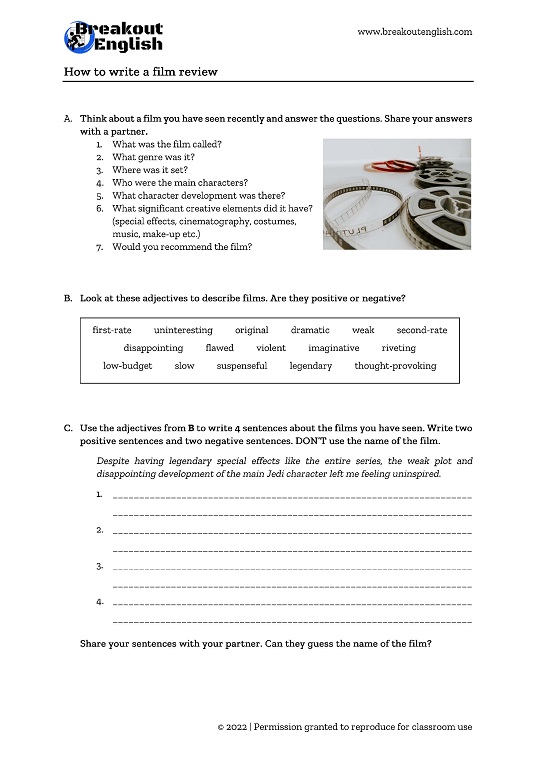
1 thought on “How to write a film review”
Interesting and useful material to be used in class. thanks!
Comments are closed.


Movie Reviews ESL Lesson
In this intermediate-level ESL lesson, you will learn grammar, vocabulary, and phrases to talk about everyday English topics: an English conversation lesson to give your opinion, agree and disagree with others about movies.
This ESL lesson also comes with a downloadable PDF you can access when you are a member of Pocket Passport. Sign up below as a student or teacher.
This ESL video lesson for daily English will help ESL students learn vocabulary, grammar, improve listening and be confident English speakers.
Practical English for everyday situations.

ESL Questions on Movies
What makes a movie “great” in your opinion?
Do you like to watch old movies? Black and white movies?
Do you watch your favorite movies more than once? How often?
Do you think a movie has to be believable to be good?
Do you pay attention to what movie critics think about movies?
How have movies changed over the years?

ESL Video on Movie Reviews
Watch the following ESL YouTube video lesson about movies.
Listening Practice Movie Reviews
Watch the YouTube video and answer the following questions about Movie Reviews.

How do reviewers like the movie by Claude De Roserio?
When did Yana see the movie?
What was Yana’s favorite part of the movie?
Does Michiko live near the theater?
What didn’t Michiko like about the movie?
Did the reporter like the movie?
Who does the reporter agree with?
Where did they ask people’s opinions?
Speaking Activity
Use the ESL illustrations to talk about the passage and movies and movie reviews.

ESL vocabulary to talk about movies
Believable | complaint | criticism | exactly opposite extremely | local(s) | opinion | opposite | point out reflect | specific | in terms of | i couldn’t agree more personally speaking | i have to side with.
Match the words on the left with the meanings on the right .


Discuss the following quotes about opinions, agreeing and disagreeing .

“Never judge someone by the opinion of others.” Unknown
“Try being informed instead of just opinionated.” Unknown
“Your opinion is not my reality.” Steve Maraboli
“There are as many opinions as there are people.” Terence
“Just because they disagree, doesn’t mean you ain’t right.” Toba Beta
“There are as many opinions as there are experts.” Franklin D. Roosevelt
“A wise man makes his own decisions, an ignorant man follows public opinion.” Unknown
Discuss the following questions about opinions, agreeing and disagreeing .

- Do you always check the comments and ratings before deciding on a movie?
- Do you always check the comments and ratings when buying something online?
- What are examples of things that it’s better to make your opinion over taking the word of others?
- Do you have the same or completely different taste for things than your friends?
- Do you leave ratings and comments for products and services?
In Your Own Words
Explain what the word or phrase in bold means and give an example. Example: She was exhausted because she worked until midnight. Meaning: very tired - I’m exhausted because I stayed up and studied all night.

I couldn’t agree with the reviews more !
Michiko’s complaint was that the characters were not believable.
The positive reviews reflect exactly how I feel.
Her opinion was the exact opposite .
I’m afraid I disagree with her opinion.

Missing Words
Watch the video again and complete the sentences.

The new movie by Claude De Roserio has received some ____________________ 1 positive reviews. We went down to the local cinema to speak to some locals to get their _________________ 2 on the movie. Do they agree with the recent reviews?
The first person we spoke to was Yana, who had just seen the movie. “______________________ 3 with the reviews more! It was fantastic!”. Yana went on to say that her favorite part was the ending. She said, “it was _________________ 4 but also very satisfying. The positive reviews _______________ 5 exactly how I feel.”
The next person we spoke to was less positive. Michiko had traveled a long way to watch the movie in this __________________ 6 cinema. “I’m afraid I disagree with the reviews”, she said. “In fact, I’d say the ____________________ 7 !”. Michiko’s __________________ 8 was that the characters were not believable and when our reporter pointed out the fact that other people had liked the characters, Michiko said that she disagreed.
Personally speaking, I have __________________ 9 Yana on this one. While I can understand Michiko’s criticism of the characters, I’m afraid I disagree with her opinion that they were not believable. ____________________ 10 the ending, I agree with Yana 100% – it was an incredible way to close the show!
The new movie by Claude De Roserio is out now. Let us know what you think!

Are You a Teacher?
Get access to over 500 lessons.
- Audio Files
- Downloadable PDF’s
- Digital Quizzes & Flashcards
- Grammar Tools
- Gamification Tools
- Add Student Accounts
- Create & Sell Courses
Are You a Student?
Improve your….
- Vocabulary & Idioms

- Privacy Policy
- Terms and Conditions
Customer Care is here to help!
Copyright 2022 Procketpassport.com.
All Right reserved.
- Full Access to Select Lessons
- New Lessons Added Every Week
- Free Lessons Include:
- PowerPoints
- Everything in Free +
- Full Access to ALL Lessons
- Lesson & Course Builder
- Easily Create Sales Pages
- Sell Courses Online
- Upload Your Own Content
- Student Accounts
- Premium Teacher & Student Tools
- Online Reservation System
- Feedback & Evaluation Tools
- Full Admin Tools
- Full Customization
- & Lots More!
Enter your email address below where you would like us to send the free sample!
Your privacy is protected..

Your Free Sample will arrive shortly. Have a great day!

English Current
ESL Lesson Plans, Tests, & Ideas
- North American Idioms
- Business Idioms
- Idioms Quiz
- Idiom Requests
- Proverbs Quiz & List
- Phrasal Verbs Quiz
- Basic Phrasal Verbs
- North American Idioms App
- A(n)/The: Help Understanding Articles
- The First & Second Conditional
- The Difference between 'So' & 'Too'
- The Difference between 'a few/few/a little/little'
- The Difference between "Other" & "Another"
- Check Your Level
- English Vocabulary
- Verb Tenses (Intermediate)
- Articles (A, An, The) Exercises
- Prepositions Exercises
- Irregular Verb Exercises
- Gerunds & Infinitives Exercises
- Discussion Questions
- Speech Topics
- Argumentative Essay Topics
- Top-rated Lessons
- Intermediate
- Upper-Intermediate
- Reading Lessons
- View Topic List
- Expressions for Everyday Situations
- Travel Agency Activity
- Present Progressive with Mr. Bean
- Work-related Idioms
- Adjectives to Describe Employees
- Writing for Tone, Tact, and Diplomacy
- Speaking Tactfully
- Advice on Monetizing an ESL Website
- Teaching your First Conversation Class
- How to Teach English Conversation
- Teaching Different Levels
- Teaching Grammar in Conversation Class
- Members' Home
- Update Billing Info.
- Cancel Subscription
- North American Proverbs Quiz & List
- North American Idioms Quiz
- Idioms App (Android)
- 'Be used to'" / 'Use to' / 'Get used to'
- Ergative Verbs and the Passive Voice
- Keywords & Verb Tense Exercises
- Irregular Verb List & Exercises
- Non-Progressive (State) Verbs
- Present Perfect vs. Past Simple
- Present Simple vs. Present Progressive
- Past Perfect vs. Past Simple
- Subject Verb Agreement
- The Passive Voice
- Subject & Object Relative Pronouns
- Relative Pronouns Where/When/Whose
- Commas in Adjective Clauses
- A/An and Word Sounds
- 'The' with Names of Places
- Understanding English Articles
- Article Exercises (All Levels)
- Yes/No Questions
- Wh-Questions
- How far vs. How long
- Affect vs. Effect
- A few vs. few / a little vs. little
- Boring vs. Bored
- Compliment vs. Complement
- Die vs. Dead vs. Death
- Expect vs. Suspect
- Experiences vs. Experience
- Go home vs. Go to home
- Had better vs. have to/must
- Have to vs. Have got to
- I.e. vs. E.g.
- In accordance with vs. According to
- Lay vs. Lie
- Make vs. Do
- In the meantime vs. Meanwhile
- Need vs. Require
- Notice vs. Note
- 'Other' vs 'Another'
- Pain vs. Painful vs. In Pain
- Raise vs. Rise
- So vs. Such
- So vs. So that
- Some vs. Some of / Most vs. Most of
- Sometimes vs. Sometime
- Too vs. Either vs. Neither
- Weary vs. Wary
- Who vs. Whom
- While vs. During
- While vs. When
- Wish vs. Hope
- 10 Common Writing Mistakes
- 34 Common English Mistakes
- First & Second Conditionals
- Comparative & Superlative Adjectives
- Determiners: This/That/These/Those
- Check Your English Level
- Grammar Quiz (Advanced)
- Vocabulary Test - Multiple Questions
- Vocabulary Quiz - Choose the Word
- Verb Tense Review (Intermediate)
- Verb Tense Exercises (All Levels)
- Conjunction Exercises
- List of Topics
- Business English
- Games for the ESL Classroom
- Pronunciation
- Teaching Your First Conversation Class
- How to Teach English Conversation Class
Talking About Movies (Upper-Intermediate & Advanced ESL Lesson Plan)

Compelling Conversations: Chapter 19: Talking About Movies
This is a sample lesson plan taken from Compelling Conversations: Questions & Quotations on Timeless Topics. To view more sample chapters, please visit CompellingConversations.com . The book can be previewed and purchased on Amazon US & Amazon Europe . To download a printable version of this chapter, please click here: CC-Chapter19-Movies-Lesson-Plan.pdf
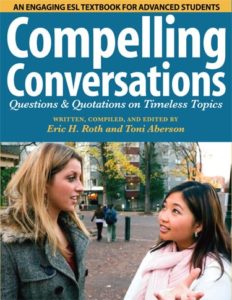
Movies Lesson Plan (ESL) - Chatting
You can also start a conversation by asking for movie suggestions. Talk with your partner, and share your movie experiences.
1. Do you like movies? Where do you usually see movies? 2. How often do you watch movies? At home? In theatres? 3. Where do you find movies to watch at home? Library? Cable? Blockbuster? Netflix? 4. Do you have cable television? Do you use on-demand features? 5. Do you own any movies? Which? Do you repeatedly watch them? 6. Have you figured out a way to see movies for free? How? 7. Can you compare movie houses in your homeland with theatres in the United States? 8. What might annoy you at a movie theatre? Using phones? Babies crying? Other? 9. Do you have a favorite movie theatre? A preferred place to sit? 10. Have you ever seen a celebrity or famous person? Where? Tell us about it 11. What movies have been blockbusters here? In your native country? 12. Can you think of some tourist sights related to the movie industry? 13. What movies have you seen that took place in Los Angeles? New York? Chicago? 14. Have you ever seen movies being filmed? Where? What was the atmosphere? 15. Have you ever acted in a play or movie? Can you describe your experience?
Movies Lesson Plan (ESL) - Vocabulary
| Adventure | With your partner, write definitions for five vocabulary words.
Movies Lesson Plan (ESL) - Movie Genres1. Which types (genres) of movies do you enjoy most? Why? 2. Can you think of an example of a good movie in five different categories? 3. Can you think of an example of a bad movie in three categories? 4. What makes your favorite films special or memorable? 5. Name a few movies that you disliked. Why did you dislike them? 6. Can you think of some books that have been adapted into movies? Did the adaptations work? 7. Did you have a favorite movie as a child? Teenager? 8. Did you have a favorite star as a child or teenager? Who? Why? 9. Do you know anybody who had a “crush” on a famous actor or actress? 10. Have you ever seen a movie several times? Which? Why? 11. Do you have any favorite actors now? Why? Did they move you in any role? 12. What actors, actresses, or directors would you like to lunch with? 13. Do you have any favorite directors? Why? Which of that director's films touched you? 14. How do you decide which movie to see? Word of mouth? Ads? Awards? Reviews? 15. Which movies would you suggest a tourist to your country watch? Why? 16. What movies have you seen this year? Which do you recommend? 17. Do you think movies influence society or reflect society? How? Movies Lesson Plan (ESL) - QuotationsCircle four quotes that appeal to you. Discuss your choices. 1. “Movies are a fad. Audiences really want to see live actors on a stage.” –Charlie Chaplin (1889—1977), British comedian and actor 2. “You know what your problem is? It's that you haven't seen enough movies—all of life's riddles are answered in the movies.” –Steve Martin (1945—), comedian 3. “I think nudity on screen is disgusting, shameful, and unpatriotic. But if I were twenty-two, with a great body, it would be artistic, tasteful, patriotic, and a progressive, religious experience.” –Shelly Winters (1920—2006), actress 4. “Watch this if you like, and if you don't, take a hike.” –Clint Eastwood (1930—), actor, director, and producer 5. “It's the movies that have really been running things in America ever since they were invented. They show you what to do, how to do it, when to do it, how to feel about it, and how to look how you feel about it.” –Andy Warhol (1928—1987), American artist 6. “We need families to start taking more responsibility in understanding which movie is good for their children and which movie is not.” –Jet Li (1963—), Chinese actor and martial artist 7. “Movies are fun, but they're not a cure for cancer.” –Warren Beatty (1937—), American actor, director, and producer 8. “I did a women's movie, and I'm not a woman. I did a gay movie, and I'm not gay. I learned as I went along.” –Ang Lee (1954—), film director born in Taiwan 9. “My movies were the kind they show in prisons and airplanes because nobody can leave.” –Burt Reynolds (1936—), American actor 10. “Acting is not an important job in the scheme of things. Plumbing is.” –Spencer Tracy (1900—1967), actor 11. “Maybe every other American movie shouldn't be based on a comic book.” –Bill Maher (1956—), American comedian 12. “Life is like a movie, write your own ending. Keep believing, keep pretending.” –Jim Henson (1936—1990), American creator of the Muppets 13. “The difference between life and the movies is that a script has to make sense, and life doesn't.” –Joseph L. Mankiewicz (1909—1993), American screenwriter Movies lesson plan written by Eric Roth of CompellingConversations.com 12 comments on “ Talking About Movies (Upper-Intermediate & Advanced ESL Lesson Plan) ”Thank you for posting and sharing this conversation lesson for readers! I absolutely love these plans. Thank you for having these out here. It’s very much appreciated. Thanks dude, excellent stuff as always! Keep it coming :) Good plan & good organization of the lesson. “The difference between life and the movies is that a script has to make sense, and life doesn’t”–Joseph L. Mankiewicz (1909—1993), American screenwriter Enjoyed examining this, very good stuff, thankyou. Talk sense to a fool and he calls you foolish. by Euripides. fdcaggeddggeefea Great stuff! Thanks for sharing your craft and material. it’s really use full for me.thanks a lot. Some great genres I never would have thought of! Thanks for sharing :) I have a free lesson plan on movies here if you would like to give it a whirl feel free to do so! http://yourenglishsource.com/movie-vocabulary/ Tht’s good ,,, i like that ,, thank u Very helpful content and well-organized. I lead a drop-in ESL conversation group and this helped me prepare — FAST! Thank you Thanks! Very useful! Leave a Reply Cancel replyYour email address will not be published. Required fields are marked * Topic: TV & Cinema Mockumentaries and other comedy seriesWith this lesson, students discuss mockumentaries like The Office! They also explore other comedy series and learn some descriptive vocabulary. They discuss opinions on famous comedy series and look at proposals for other potential programmes.  Shakespeare: the be-all and end-all?Explore the world of Shakespeare with this lesson! Students discuss Shakespeare’s phrases, his best-known work, as well as themes and famous quotes. They watch a video and discuss Shakespeare’s relevance and influence in modern-day society.  It’s a one-way street! Parasocial relationshipsWith this engaging lesson, students read an article, discuss parasocial relationships and talk about fandom. They also share their experiences, learn vocabulary to talk about the topic and give their opinions on fans and fandoms.  Financial crimesIn this lesson, students practise vocabulary related to financial crimes and watch a video about money laundering. They also discuss real cases of financial fraud, read a film synopsis and talk about their personal opinions.  It’s the cheesiest time of the year!This lesson not only enhances language skills but also encourages students to think about cultural aspects of the holiday season while having fun getting in the Christmas spirit. Have a laugh together talking about cheesy Christmas films and activities!  The future of the film industryIn this lesson about the film industry, students talk about the changes that the industry might undergo in the near future. They also learn phrases related to films, watch a news report and read two short texts.  Dissecting TV showsIn this speaking lesson about TV shows, students do a variety of speaking activities and watch two trailers.  Has cancel culture gone too far?In this lesson students learn vocabulary useful to talk about cancel culture, do a CAE multiple-choice cloze task, watch a video, and get the opportunity to discuss cancel culture and freedom of speech in depth.  Why do we like horror films?In this lesson, students learn vocabulary useful when talking about fear or relief, watch a video about horror films, and describe situations in which they felt uneasy or scared.  Do you watch trailers?In this lesson, students learn and practise useful language for talking about films and discuss their preferences related to watching films.  Question Time – Let’s have a panel show!In this lesson, students read two short texts about a TV series, The Crown and a panel show, Question Time, learn useful language for agreeing and disagreeing, and have a panel show.  Have yourself a merry little Christmas!Thanks to this Christmas lesson plan, students discuss Christmas preparations, watch some TV commercials and write their own Christmas wishes.  Let’s binge watch it together!In this lesson plan students learn advanced TV vocabulary, discuss statistics connected with binge watching and talk about their TV series watching habits. 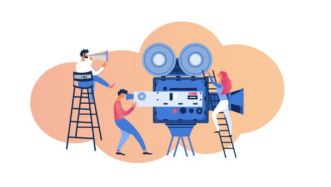 Let’s go to the movies! – ESL lesson plan on filmsThis ESL lesson plan on films is based on a video review of Pain and Glory. Your student will learn new vocabulary and write a short film review themselves.  Movie quotes you should know!With this worksheet, your students will learn some classic movie quotes, use them to practise reporting verbs and do some fun pairwork activity.  Colour psychology – idiomsThis lesson plan for adults only looks into the world of colours and how they are used in the movie industry. Students will also learn different colour idioms. Stay updatedUsername or Email Address Remember Me You are using an outdated browser. Please upgrade your browser or activate Google Chrome Frame to improve your experience. 18 Movies for ESL StudentsIn native English classrooms, teachers often get their students started with a book and then let them watch the movie based off of it as a reward. But movies have so much more to offer. You can also use the movie adaptations by themselves to teach and encourage your students to explore the English language. Today, we’ll take a look at some popular movies based on books and what theymove can do for your ESL students . ESL Movies for Beginners1. “how the grinch stole christmas”, 2. “charlie and the chocolate factory”, 3. “miss peregrine’s home for peculiar children”, 4. “harry potter and the sorcerer’s stone”, 5. “the maze runner”, 6. “holes”, esl movies for intermediate learners, 7. “the fault in our stars”, 8. “the hunger games”, 9. “divergent”, 10. “the book thief”, 11. “about a boy”, 12. “rumble fish”, esl movies for advanced learners, 13. “everything is illuminated”, 14. “of mice and men”, 15. “fight club”, 16. “gone girl”, 17. “to kill a mockingbird”, 18. “life of pi”. Download: This blog post is available as a convenient and portable PDF that you can take anywhere. Click here to get a copy. (Download) 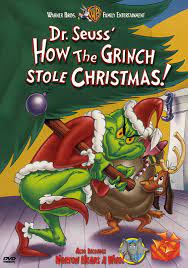 Everyone likes Christmas—that is, everyone who isn’t the Grinch, a creature who lives by himself in the mountains (with his dog) and a disposition as sour as his looks. One day, when he can no longer stand the noise and the bells and the sounds of Christmas celebrations from the nearby town of Whoville, the Grinch takes it upon himself to “steal” Christmas. Why It Works for ESL Students It’s hard to go wrong with Dr. Seuss, especially when working with kids or beginners. The language Seuss uses may throw in a ton of invented words, but the great stories more than make up for that. And speaking of the language, the rhymes and rhythm of the story are fun and can help students learn pronunciation . There’s also a live-action version of the film released in 2000, though I personally prefer the animated version. Not only is the latter much shorter (making it easier to digest), but students don’t need to be too familiar with Christmas to understand what’s going on. All celebrations have some kind of tangible representation, so your students should be able to easily grasp the significance of the Grinch stealing Christmas decorations, gifts and the feast. 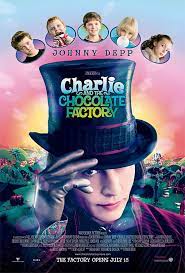 Charlie Bucket, a boy from a poor family, lives near the Wonka Factory, which recently closed down due to issues with rivals attempting to steal the factory’s secrets—specifically, its fantastic candies that are unlike any other. One day, Willy Wonka, the owner of the Wonka Factory, announces a contest where five winners of Golden Tickets (which have been randomly tucked into five Wonka Bars worldwide) get to have a free tour of his factory, an unlimited supply of chocolate and another surprise prize by the end of the tour. Charlie happens to win one of the tickets, and so the plot kicks off. Roald Dahl’s writing is clear and highly accessible to children, and his books remain beloved even decades later. In terms of vocabulary, this is certainly more complicated than Seuss’ books, but the accompanying illustrations help make it clearer. Also, even though students may have difficulties with certain words, this can be a good introduction to reading for gist and understanding unknown vocabulary from context . You can emphasize that they need not understand every single word as long as they get the general idea. Like the “Grinch,” this book has two movie adaptations. The 1971 musical version starring Gene Wilder was actually titled “Willy Wonka & the Chocolate Factory,” while the 2005 Tim Burton-directed adaptation starring Johnny Depp kept the name of the original book. Interestingly, the 1971 version seems to stay a bit closer to the story, while the 2005 version used advances in film technology to better embody the aesthetic the book describes. Either way, many students seem to like Johnny Depp, so that may be the one to go with. 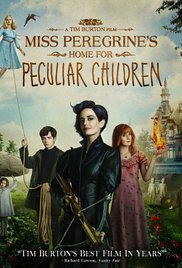 “Miss Peregrine’s Home for Peculiar Children” is a thrilling tale of children with special abilities trying to protect themselves from both the outside world and the bad guys out to get them. The story follows Jake’s discovery of the peculiar children and his fight to keep them safe. This movie is great for adult ESL students and teenagers learning to speak English . Characters speak with both American and British accents, which can be a nice exposure for your students. And while the movie is typically creepy (Tim Burton was the director, after all), the plot is simple. The children are hiding from the bad guys, and the bad guys are coming to get them. If your students choose to read the book, there are plenty of pictures throughout to help aid their comprehension , which makes it a nice choice for ESL students. 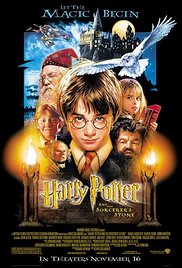 “Harry Potter and the Sorcerer’s Stone” is based on the hugely popular book by J.K. Rowling. It tells the story of Harry, who has lived in the regular world all his life, and has just found out that he and his deceased parents are famous wizards. “The Sorcerer’s Stone” is an introduction to the world of magic Harry has been missing his entire life. The movie and book are very similar, which makes it a good choice for ESL students who aren’t too experienced with reading in English. You can feel good about using the book and the movie with upper beginners and up. Just keep in mind that the actors speak British English throughout the movie. In fact, the strength of the “Harry Potter” series is not only that it’s available in multiple formats such as book , audiobook and movie , but also that it’s available in many languages worldwide. As explained in the video above, you can find “Harry Potter” in your students’ native language and use that to help them learn English. In fact, it’s very likely that your students already know the plot and might’ve even already read or watched “Harry Potter.” That makes comprehension easier, and your students will be able to focus on additional vocabulary and grammar activities. 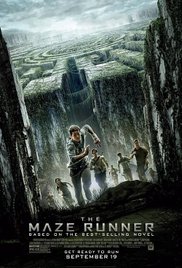 “The Maze Runner” is the story of Thomas, who finds himself without memories in a community of teenage boys, none of whom can remember where they came from or why they are there. The boys live in The Glade, a section of land surrounded by the giant walls of a maze. Thomas and the other boys must solve the maze to escape and get their lives back. “The Maze Runner” is a good movie for ESL students because the plot is very simple: Thomas must discover a way out of The Glade. Much of the plot can be understood visually rather than depending heavily on dialogue, which makes it good for beginning and low intermediate ESL students. Following up with the book is a good choice because the writing is relatively simple but the story is still interesting and suspenseful.  In “Holes,” a young boy is wrongfully convicted of a crime and is sent to a detention camp in the middle of a desert. There, he (along with others like him) is forced to dig holes for a mysterious reason. The 2003 movie adaptation has a great cast that includes Sigourney Weaver, John Voigt and Shia LaBoeuf. The English is generally close to the book, and many parts of the plot involve flashbacks. That means your students can listen to a character talk about events while watching them on the screen. The movie is also very well-made and faithful to the book, even if it didn’t get much attention when it came out. As for the book itself, it’s quite engaging and interesting, and the characters are well-developed, at least for a “kids’” book. It starts off using very short, clear sentences, and gradually picks up the pace by adding longer paragraphs just when readers are getting used to the style. Louis Sachar is an excellent author, and the story deals with some difficult issues like race, murder, justice and rehabilitation in an entertaining way without talking down to readers. 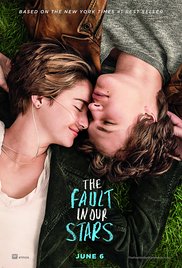 Have your tissues on hand when you view this film with your students. “The Fault in Our Stars” is a raw and honest look at life in the midst of tragedy. The story follows Hazel in her battle against terminal cancer and Gus as he lives life as a cancer survivor. It’s an emotional movie that encourages viewers to live life to the fullest each and every day. No matter what country a person calls home, everyone lives life feeling the same emotions—joy, sadness, despair, elation and the like. Intense emotion is something that everyone, including each of your ESL students, can relate to. As your students watch this movie or read the book it’s based on, the struggles that Hazel and Gus face will touch them in their deepest places and might just spur them on to make the most out of every day they have. 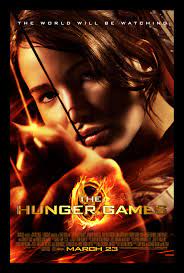 To punish its citizens for a revolt that occurred many years ago, the government demands two tributes from each district—one boy and one girl between 12 and 18 years old—to compete in the annual Hunger Games, where they must fight to the death until only one survivor remains. The movie is visually stunning, and it brings the story to life in a way that really builds on the great visuals already described in Suzanne Collins’ work. It can also lead to interesting discussions regarding the future of the world, totalitarian structures, friendship, love and family. As for the books, they’re hugely popular (so much so that many of your students may have already read them) and the movies have also been incredibly popular with various age groups. The writing is at a good, intermediate level that’s neither too easy nor too challenging for your students. The style is noteworthy as well, since it’s written in first person present. 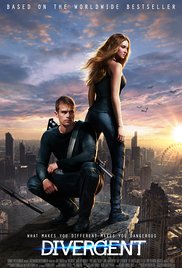 “Divergent” is set in post-apocalyptic Chicago, its inhabitants divided into five factions depending on their dominant personality trait. Tris, the protagonist, leaves Abnegation, the faction of selflessness, to join Dauntless, the faction of bravery. The movie follows her journey to become a part of a new community and culture. This movie is great for starting a conversation on culture since Tris is submerged in a culture completely different from the one she has known her entire life. If you’re teaching ESL in an English-speaking country, many of your students will find themselves in similar positions. The members of your class will relate to Tris on the screen as well as on the page, and her struggle to understand a new world and find her place within it. 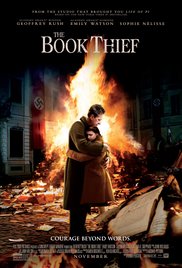 “The Book Thief” tells the story of Liesel, a young girl in war-torn Germany in the 1930s. At the start of the story, Liesel is illiterate, and it’s her foster father Hans who teaches her to read and inspires in her a love of the written word. The movie takes a very personal look at historic events that affected people all over the world. Your students will probably have studied these events in their home countries and first languages, so they will have some knowledge of the context that the movie and book take place in. This will give them an advantage in comprehension and allow you to push them a little harder than you might with other material. Be aware that, throughout the movie, the actors speak with a German accent. This can be a challenge for ESL students who may be used to hearing a neutral accent in spoken English, but it’s also a good one. It will challenge students’ listening skills , making them better overall speakers (and listeners) of English. But because of this, you may want to reserve this movie for your intermediate and advanced students. Also, your students may be able to relate with the main character’s struggle to learn a new language. You can zero in on the short scene where Liesel finishes her first book, “The Gravedigger’s Handbook,” to where Hans shows her the dictionary he has created on the walls of their basement, and make a Q&A or activity about it. 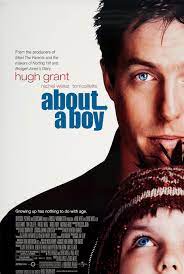 “About a Boy” is a rom-com about Will Freeman, a freewheeling bachelor who attends a meeting of single parents to meet single women. Of course, since the meeting is for parents , Will has to pretend that he has a toddler of his own. Unfortunately for Will, Marcus—the son of one of the other parents attending the meeting—discovers his ruse. Marcus uses this information to blackmail Will, and shenanigans—as well as some much-needed character development for Will—ensue. The book isn’t necessarily easy reading, but it’s thoroughly entertaining. The plot is funny and the language includes a lot of useful slang (although it’s British English , so keep in mind that some vocabulary may be different if that’s not what you’re teaching). The book also switches perspectives from Marcus (the boy) to Will (the man-child), but remains in the third person, which means that it plays with point-of-view but doesn’t make things too confusing for ESL readers. The movie adaptation from 2002 is arguably even better than the book. For class use, you can examine what it means to be a family or a role model, how people redeem themselves and how they can live a fulfilled life. 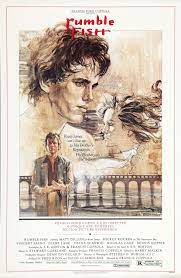 “Rumble Fish” revolves around two brothers: Motorcycle Boy, an ex-gang leader who wants to leave his life of crime behind, and Rusty James, the younger of the two brothers who wants to get into Motorcycle Boy’s old way of life. Naturally, this sets up the conflict that will drive the film through to its tragic conclusion. The 1983 movie, directed by Francis Ford Coppola and starring a cast with about a dozen actors who are still famous today, is pretty incredible, especially considering that most people probably haven’t even heard of this adaptation of one of S.E. Hinton’s books. The book was published in 1975, so many aspects of it are likely to be dated, like its book’s language. A few slang words—including the word “rumble” in the title itself—may have fallen out of fashion and can therefore be confusing for students. If you’re from a later generation, you may find some of these words confusing as well, so make sure you watch the movie before class, take note of anything that seems odd and look it up. That said, the majority of the language is still authentic, and the characters spend most of the book immersed everyday life, talking about what young people like to talk about and doing what young people like to do. Most of that vocabulary is timeless, and can help students build up their vocabulary to talk about their own lives . 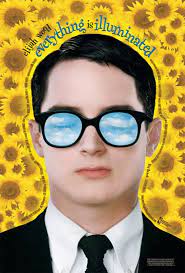 A young Jewish-American man, motivated by a passion for uncovering his family history, travels to Ukraine to find out what happened to his grandfather during World War II. The 2005 movie starring Elijah Wood manages to convey the eccentric spirit of the story in a beautifully visual way. “Everything is Illuminated” can complement units that talk about World War II or the Holocaust, and could be woven into discussions about ancestry and identity. Also, the book is told through various authors and from different perspectives. One narrator, Alex, is Ukranian, and as such his English is full of non-standard phrases and words (indeed, the title of the book is possibly just his attempt to convey the idea “all clear”). That might actually be good, though, since you can highlight the importance of communication and contrast it with the use of “correct,” standard English. It’s also interesting to see Alex’s English change and evolve throughout the story. 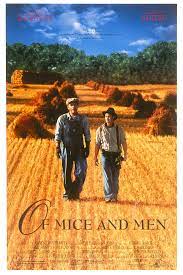 The movie centers around the two men depicted in the movie poster: George Milton, who is healthy both physically and mentally, and Lennie Small, who is the complete opposite. Forced to flee their employer during the Great Depression (due to attempted rape charges filed against Lennie), the two end up on a ranch, where trouble unfortunately continues to follow Lennie. Compared to “Everything is Illuminated,” “Of Mice and Men” uses the relatively simpler language characteristic of John Steinbeck’s work. The movie follows the book’s plot very closely, and can be used in class to practice comparing and contrasting the two mediums. Also, because one of the main characters has an intellectual disability, the movie can also be used as a jumping off point for discussions on how such individuals should be treated in society. Even though the movie is set in a completely different era, you may want to touch on how prevailing societal beliefs back then (and arguably even now) affected Lennie’s ability to live a normal life. 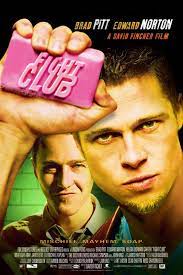 I would give you a summary of what this movie is all about, but then I’d be violating the first rule of Fight Club—that is, to not talk about Fight Club. I’m kidding, of course. Otherwise, I wouldn’t be devoting an entire section on why your ESL students can benefit from this film. There’s also a good reason it’s not easy to summarize this film, which I’ll get to in a bit. I put this under the “Advanced” section for a reason. The movie goes into plenty of tangents, but they actually seem to highlight the gist of the film. For example, a scene may show a dialogue between two people, when the narrator’s voice-over all of a sudden throws in a tangential sentence or two. If the students understand the tangent, more power to them, but it’s not always crucial to understanding what’s going on in the main plot. Many people love the book “Fight Club” is based on, but it’s not necessarily the most ESL-friendly book out there. In fact, it’s likely to be challenging for many readers. There are frequent asides and tangents that don’t really have much to do with the plot at hand at any given moment. That can be frustrating, but it can also be a great way to teach ESL students to read for gist. Despite its title, the story is actually more of a critique of consumerism, masculinity and modern society, although there is some fighting. You can explore these topics in class discussions, and can include conversations about mental health, gender relationships and violence.  When Amy Dunne suddenly vanishes after the fifth anniversary of her marriage to the writer Nick, Nick becomes the prime suspect. As more details get revealed about the couple’s life, it would appear that not all is well in paradise. This is another dark yet slightly funny story. The book is definitely more accessible for ESL readers than “Fight Club,” but it’s significantly longer. The movie is directed by David Fincher, who also directed “Fight Club,” so many stylistic elements are similar. Because there’s a mystery element to the film, you can ask students to pay close attention to clues that hint at the conclusion it eventually arrives at. Can they give any alternate interpretations to the characters of Nick and Amy?  This 1962 film is set in Alabama, where Atticus Finch, a widowed lawyer, attempts to defend a black man against false criminal charges. He also tries to educate his children, one of which is the narrator of the film, against the dangers of choosing to view certain individuals as “the other” rather than as human beings in their own right. The themes explored in this story—good and evil, racism, family, tolerance and growing up—are universal and never get old. Both the book and movie are regarded as classics, and with good reason. The book has some aspects of a southern dialect, so that can be interesting for ESL readers, especially when comparing the speech of people from different social classes. Atticus Finch, both in the book and as embodied by Gregory Peck, also provides an excellent example of clear, “proper” English . 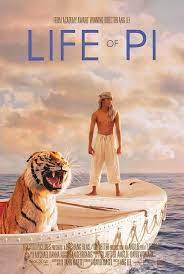 The theatrical poster is striking enough: a lone boy on a boat with a tiger. Believe it or not, this isn’t a fantasy flick: it’s an adventure film about survival, human nature and the value of a good story. And once your students watch the film itself, they’ll probably agree that the plot is even more striking than the poster—which is a feat in itself! In fact, the film has won a number of awards —including the Academy Award for Best Director, Best Cinematography, Best Original Score and Best Visual Effects. Like “To Kill a Mockingbird,” this movie deals with good and evil, values, family and human dignity. If your current lesson revolves around those topics, “Life of Pi” weaves them in a thoughtful way that’s sure to spark some heated classroom discussion. Also, it provides a good opportunity to discuss the concept of allegory and how this film is a good example of it. What do the animals represent? Why did the main character choose to tell his story in allegory form instead of a straightforward narrative? Movies may be primarily made to entertain, but don’t let that stop you from using them as a learning tool . Make the most of what Hollywood has to offer and create memorable English movie lessons in the process. And if you’re looking for more authentic learning materials, check out our list of books for ESL students: Books for English language learners (ELLs) should be engaging, culturally relevant and appropriate for the level you’re teaching. Check out these 18 excellent ELL books… Related posts:Enter your e-mail address to get your free pdf. We hate SPAM and promise to keep your email address safe 

 Film reviewTitanic film review.  © ELTbase 2008 - 2024 All rights reserved | Privacy and cookies | About | Page Top ↑
| ||||||||||||||||||||||||||||||||||||||||||||||||||||||||||||||||||||||||||||||||||||||||||||||||||||||||||||||||||||||||||||||||||||||||||||||||||||||||||||||||||||||||||||||||



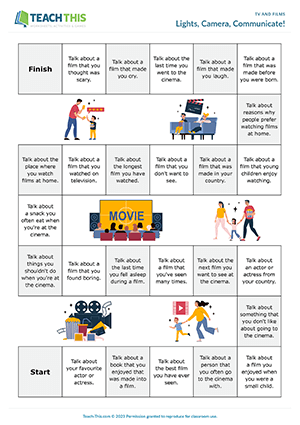
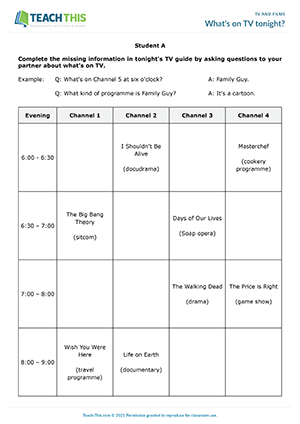
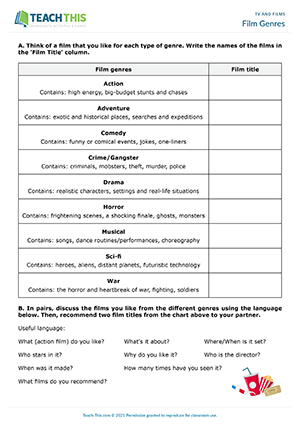
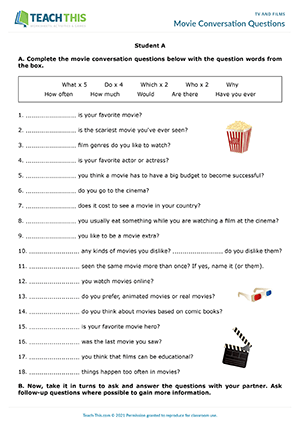
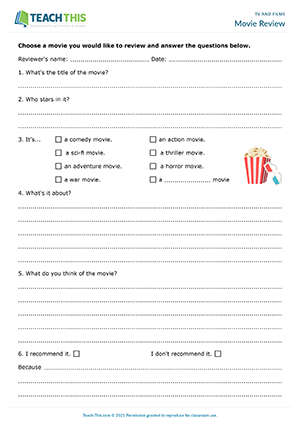
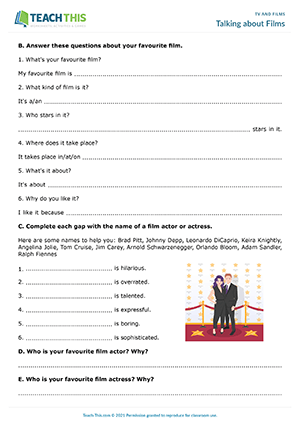
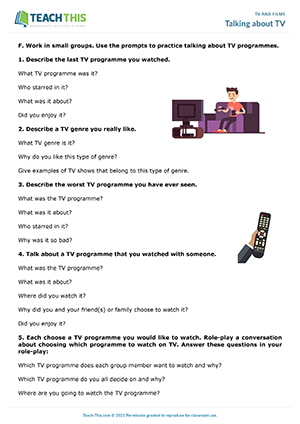
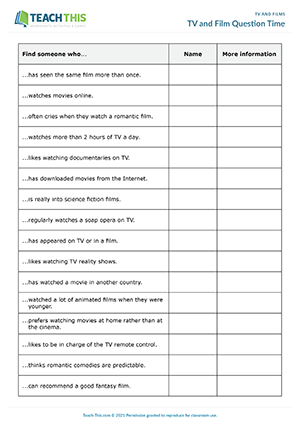
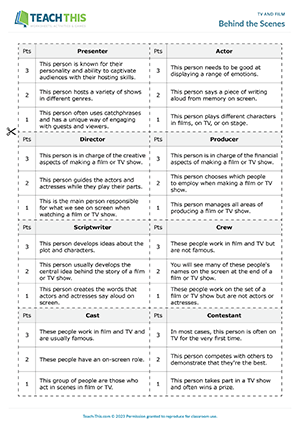
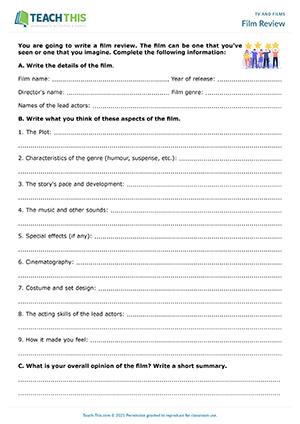
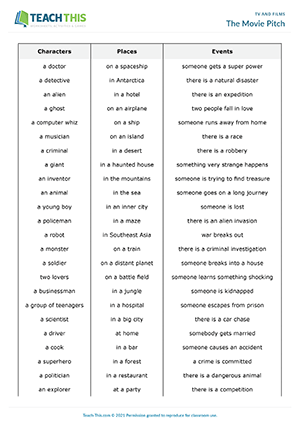
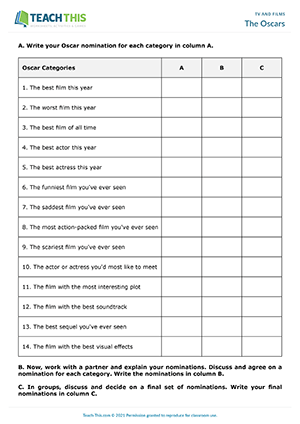
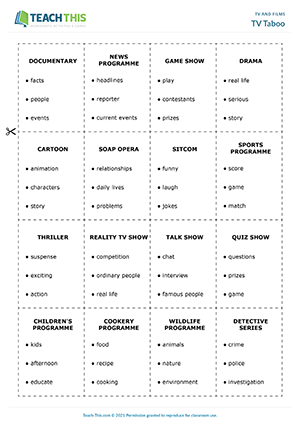
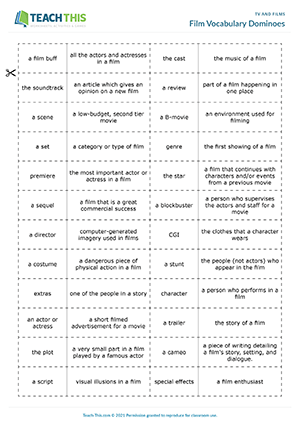












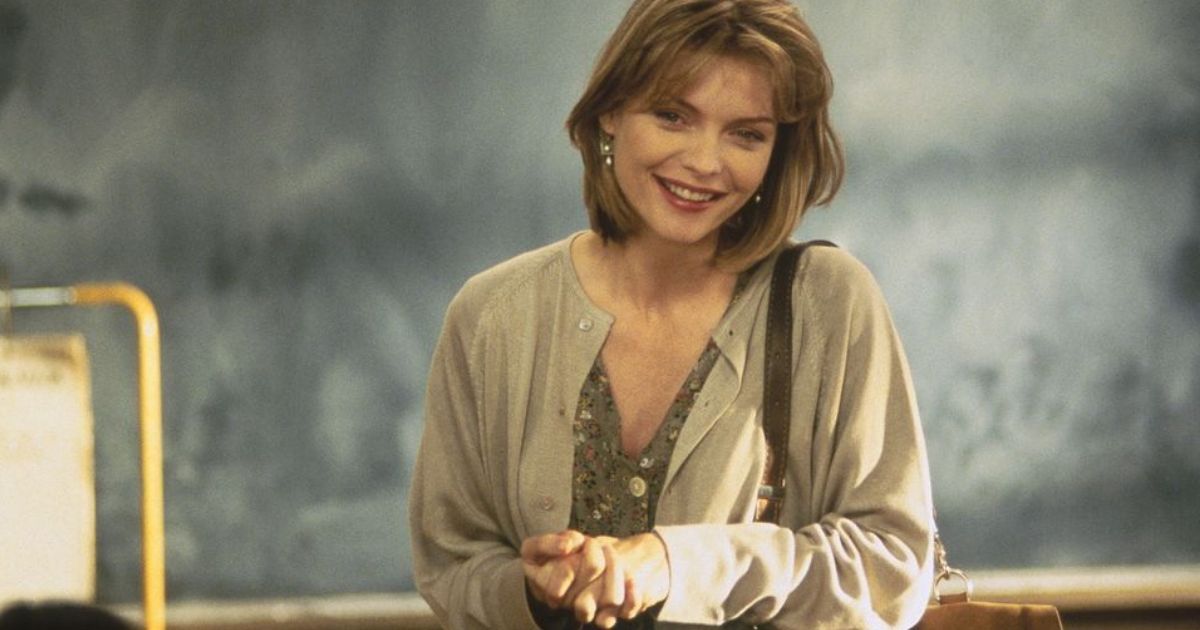
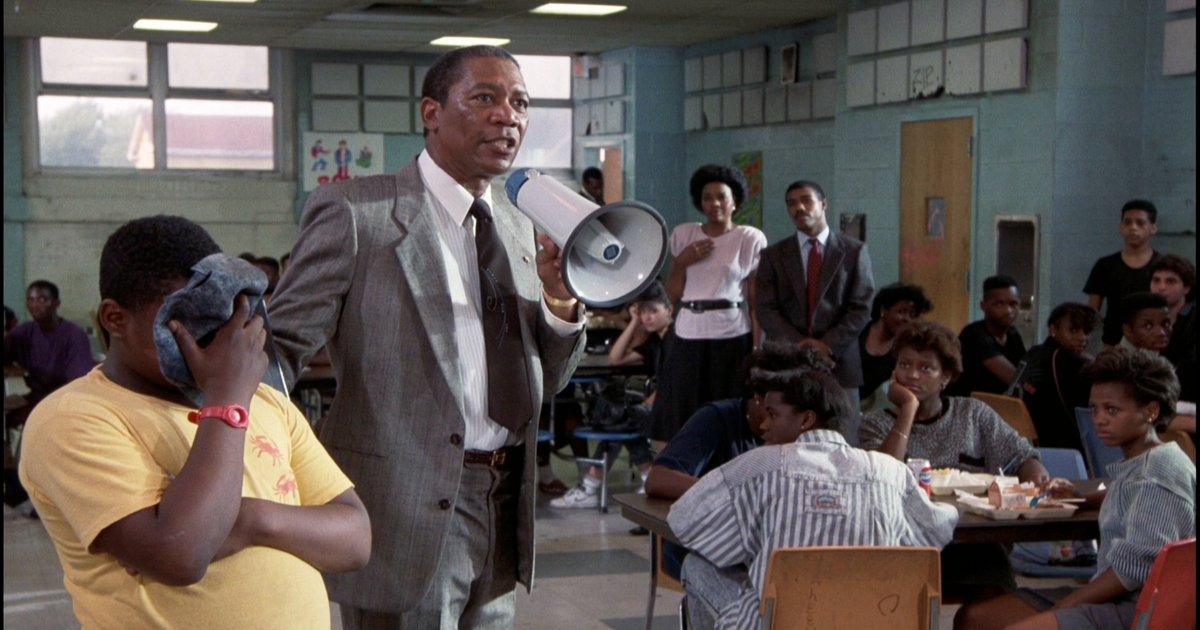
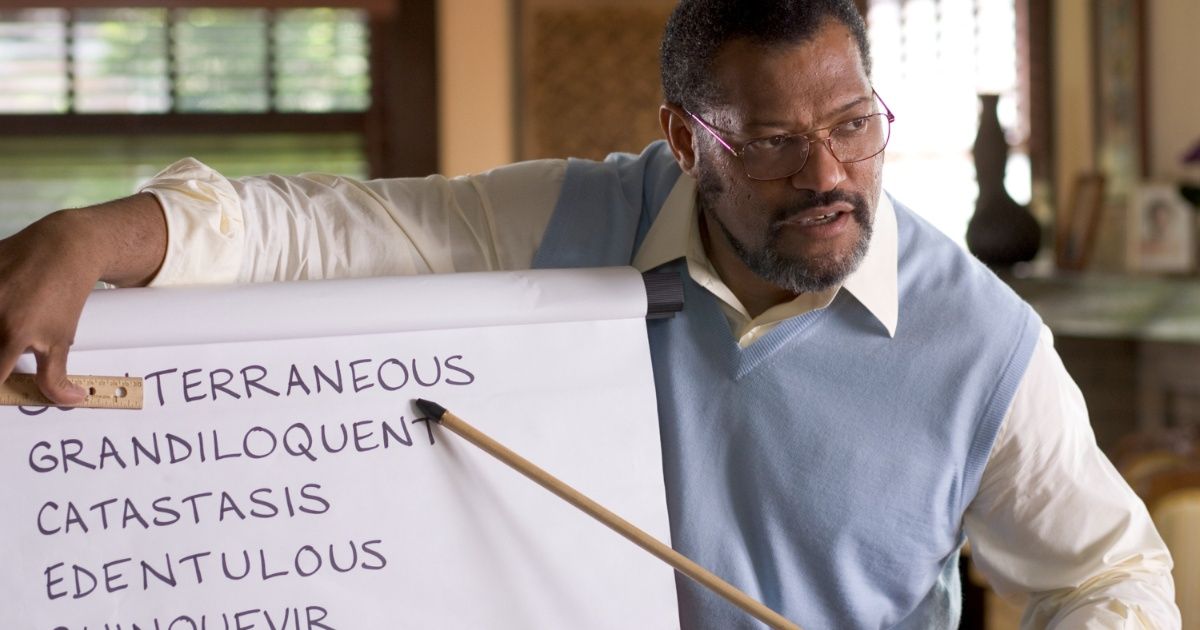
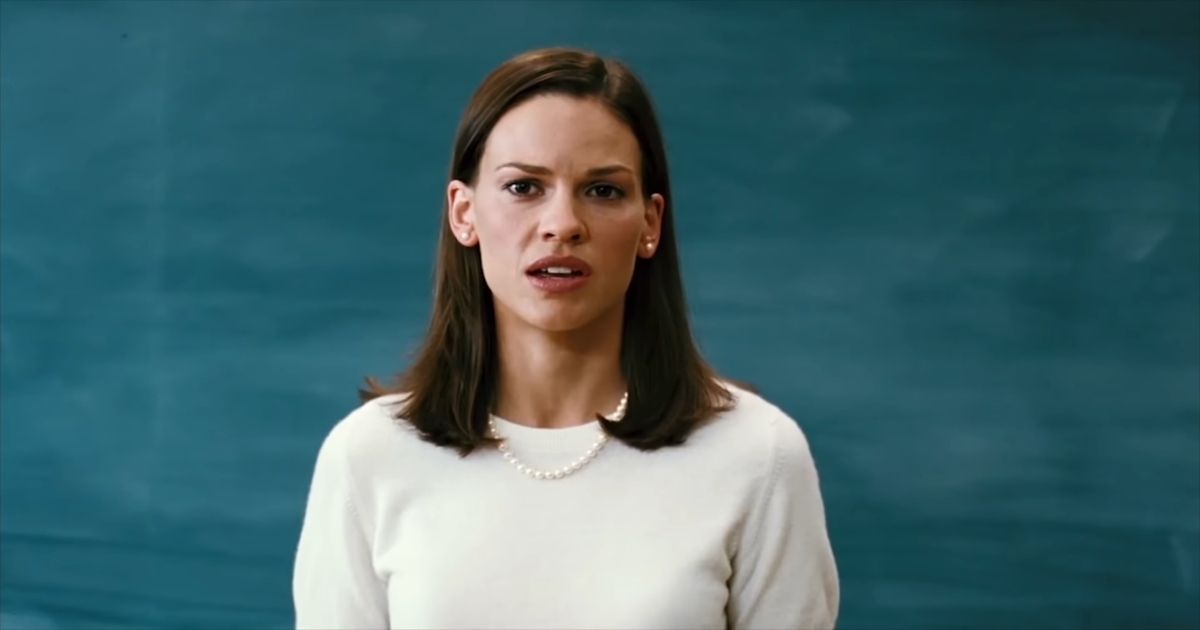
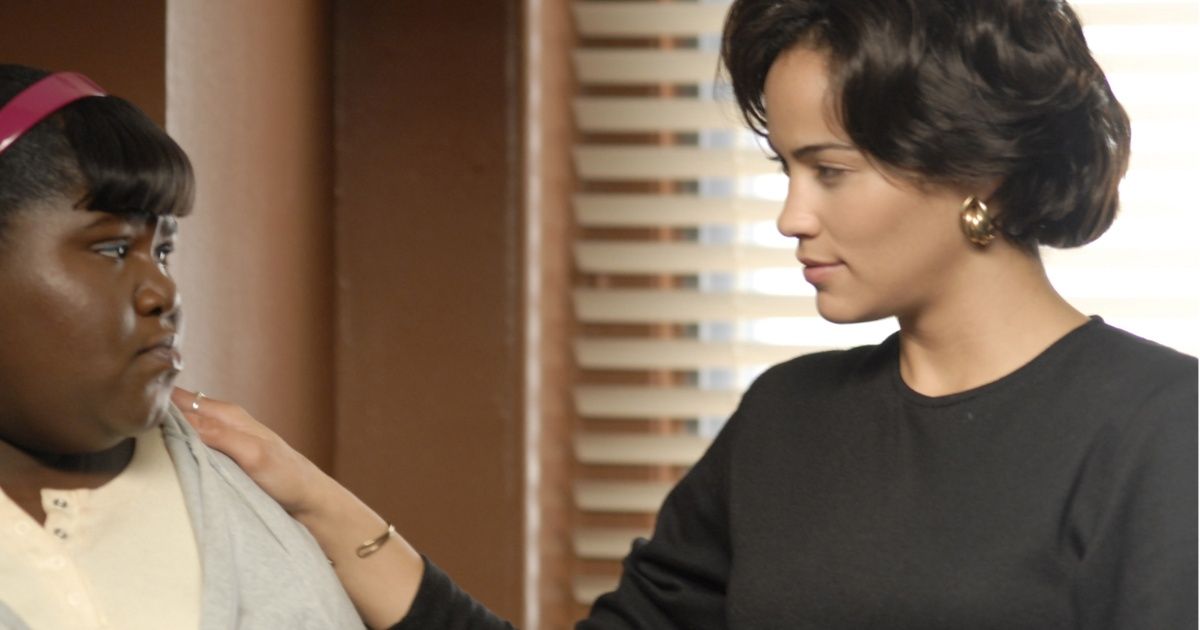
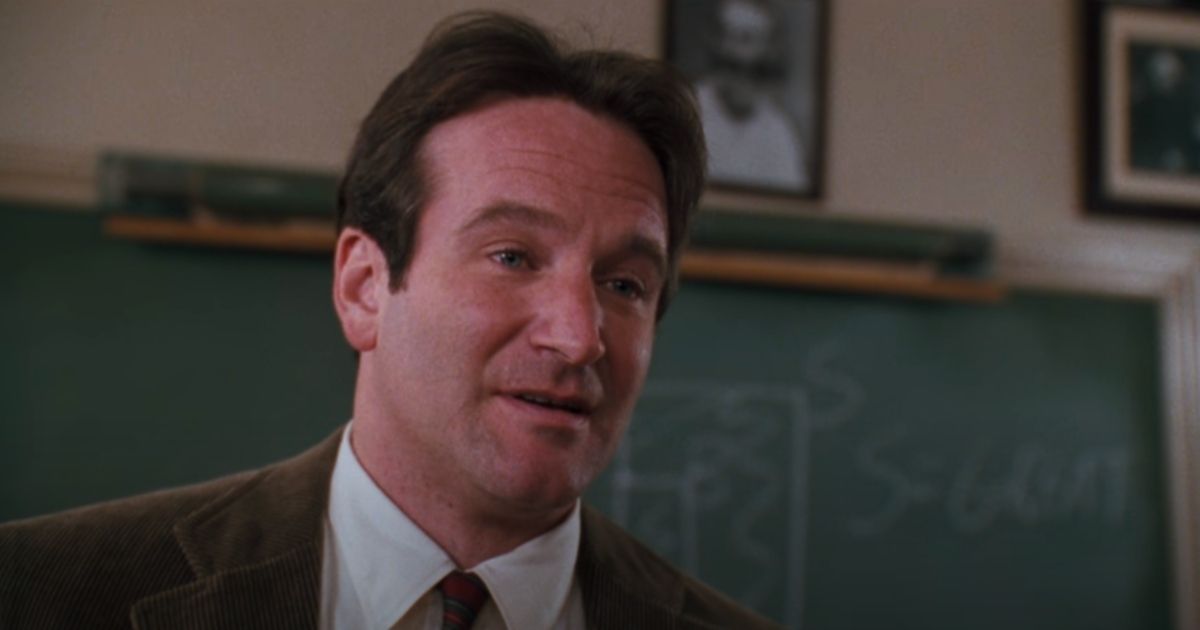
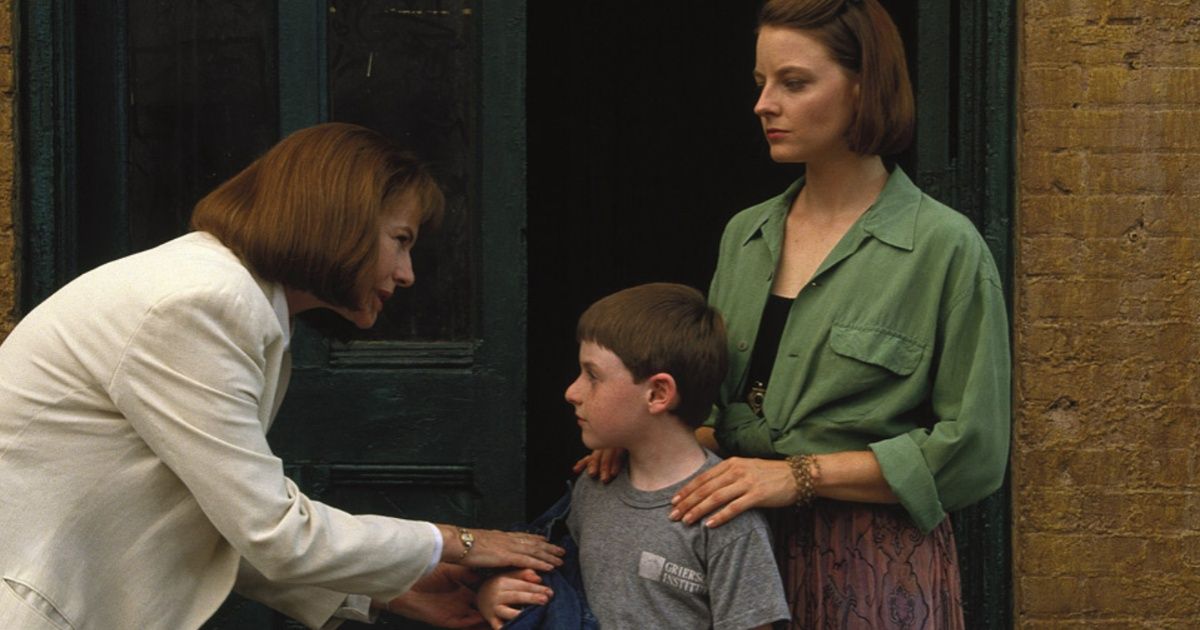
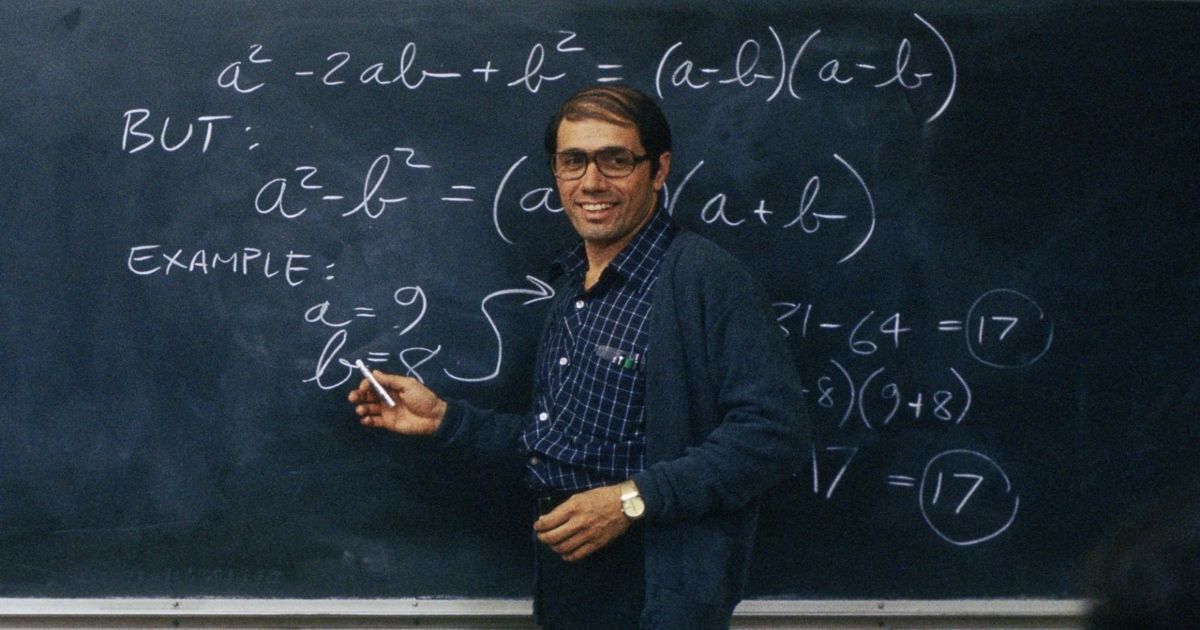

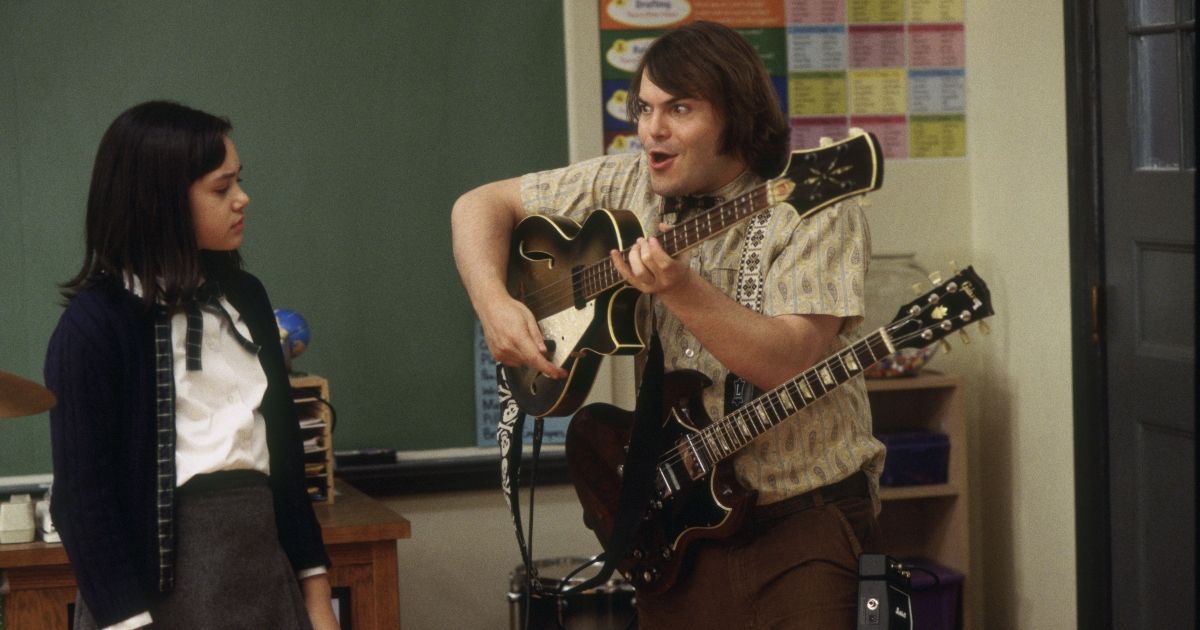
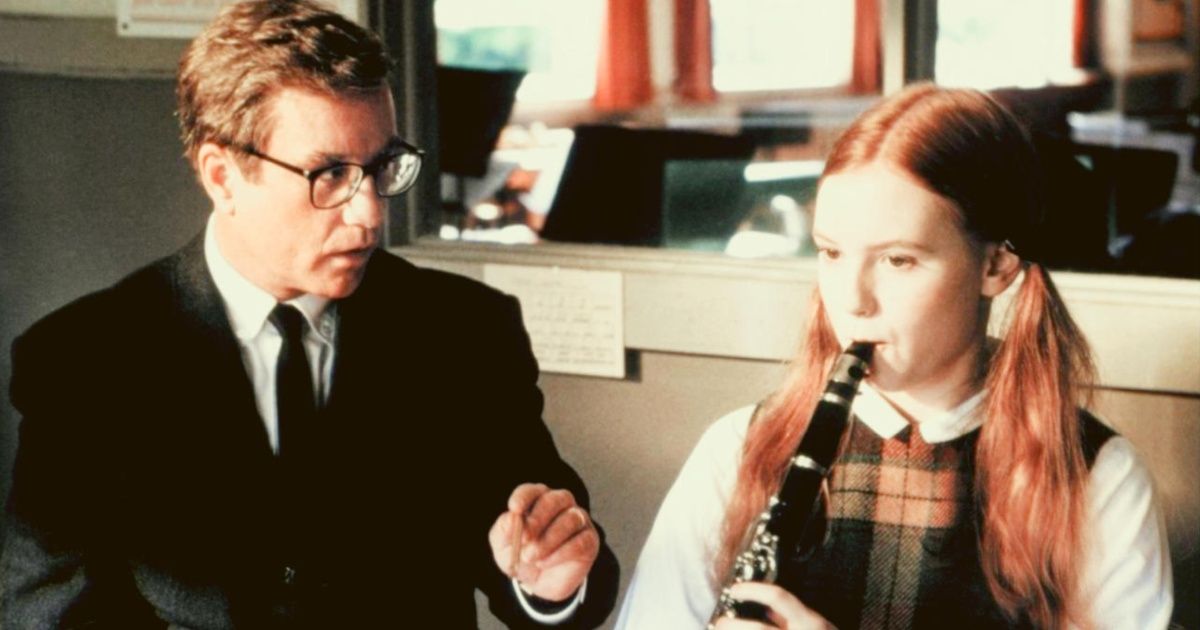
-1-1.jpg)
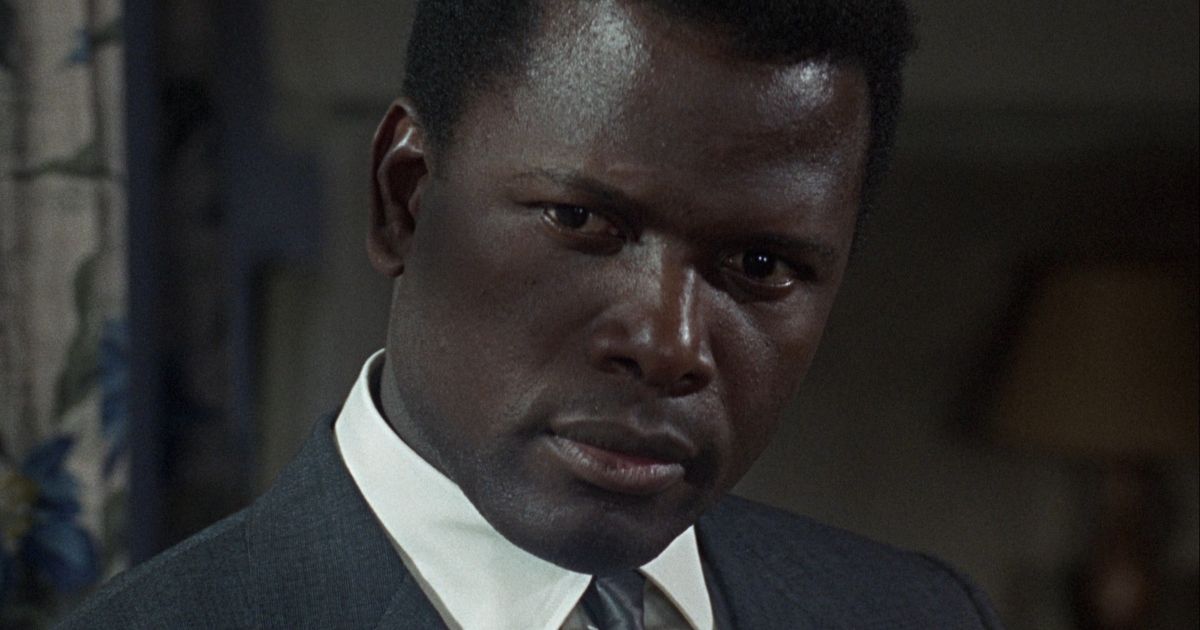
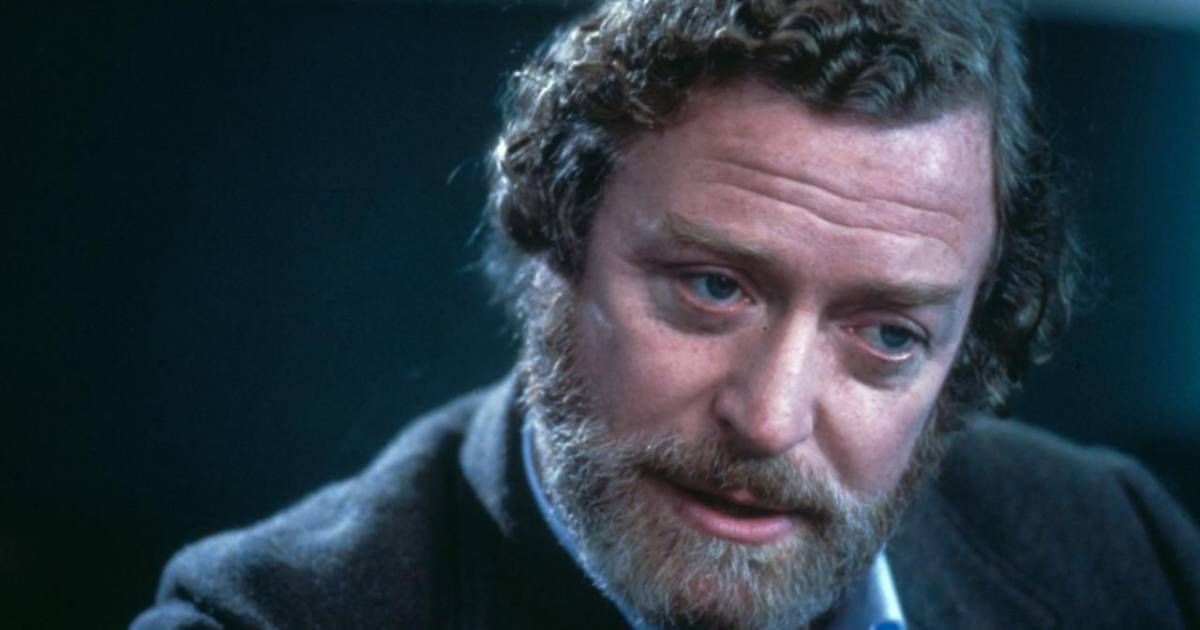
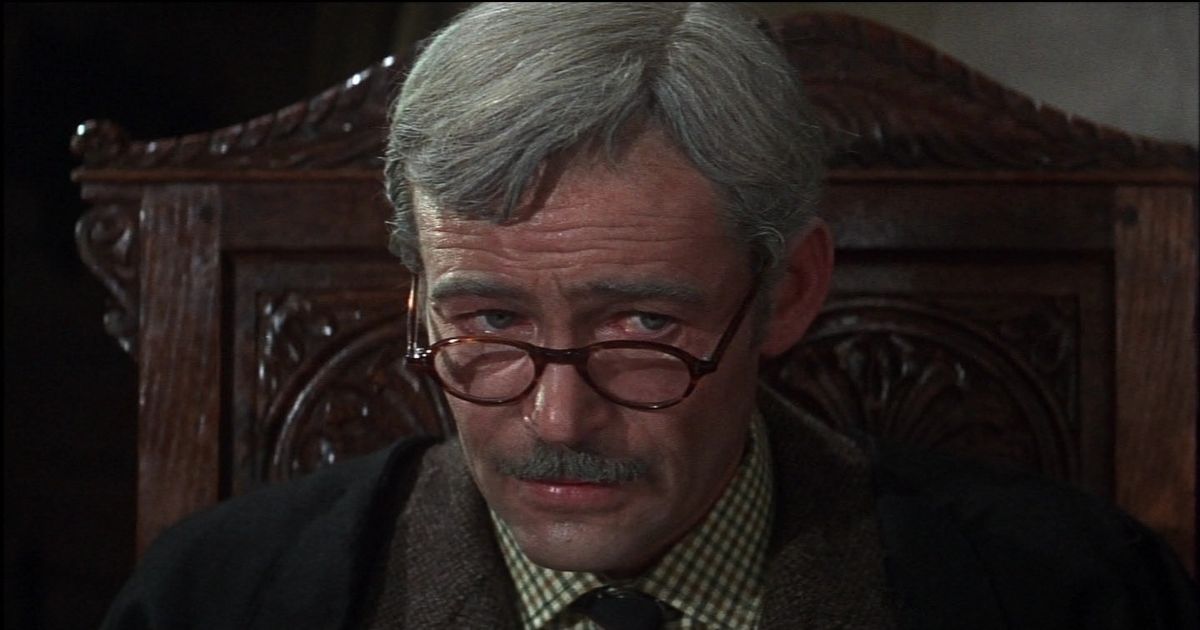









COMMENTS
Film review worksheet. The plan and worksheet are downloadable in pdf format - right click on the attachment and save it on your computer. Downloads. Lesson plan 251.6 KB. Student worksheet 252.67 KB. Bookmark this. This lesson is for teenagers or young adults with a language level of A2-B2 and focuses on discussing and writing film reviews.
It tells the story of a school teacher who is mad about his football club - Arsenal! The film was made in 1997 and is based on a best-selling book of the same name. The film has also been remade for American audiences based on baseball. The main role is played by Colin Firth (Paul) one of the UK's most famous actors.
Another thing to remember is that your review should always have a title, and that title should include the name of the film. Introduction - Essential details and mini-summary. Summary - A description of the film and some important details. Analysis - An evaluation of different elements. Conclusion - Your opinion and a recommendation.
Film review: The Hunger Games. Sci-fi adventure, 2012. In the future the USA is a new country called Panem. Every year the Capitol of Panem chooses 12 boys and 12 girls to go on a TV show called The Hunger Games.In this TV show the teenagers have to fight until there is only one person left.
This ESL lesson also comes with a downloadable PDF you can access when you are a member of Pocket Passport. Sign up below as a student or teacher. This ESL video lesson for daily English will help ESL students learn vocabulary, grammar, improve listening and be confident English speakers. Practical English for everyday situations.
32 Movie review English ESL worksheets pdf & doc. SORT BY. Most popular. TIME PERIOD. All-time. lillylol. Movie Review. Blank Movie Review. 10782 uses. nas94. Movie Review. To extract informati. 2478 uses. fatentwaim. Movie Review. A worksheet about th. ... Movie Review Writing.
Movies Lesson Plan (ESL) - Chatting. "Talking about dreams is like talking about movies, since the cinema uses the language of dreams; years pass in a second and you can hop from one place to another.". Federico Fellini (1920—1993), Italian film director. You can also start a conversation by asking for movie suggestions.
Follow the steps to write your own film review. 1. Think of a film you have watched. 2. Make notes for each of the questions in Activity 1. 3. Write your review using the your notes and the model text. Use some of the words and phrases in bold. Write between 100 and 150 words.
5. Choose a Word. A simple and lively activity for practicing listening skills, this one works better the more repetition of words there is within the movie clip. Give each student a word that will appear at least once in the movie clip. While watching, when any student hears their word, they stand up.
Learners work in pairs to do activity 1. Make sure learners understand that all the information has been included in the film review. Encourage learners to notice how the review has been organised into 3 paragraphs. 4. (15 - 20 minutes) Learners do activity 2 individually. Monitor learners as they write to make sure they are following the steps.
In this lesson, students practise vocabulary related to financial crimes and watch a video about money laundering. They also discuss real cases of financial fraud, read a film synopsis and talk about their personal opinions. Premium Plan Show. B2 / Upper Intermediate | C1 / Advanced. Speaking Class 45 min / 60 min.
ESL Movies for Intermediate Learners. 7. "The Fault in Our Stars". Have your tissues on hand when you view this film with your students. "The Fault in Our Stars" is a raw and honest look at life in the midst of tragedy.
Film Festival: An ESL Lesson Plan to Get Students Talking About Movies. Lesson Plan: This lesson is divided into two hours. The first lesson explores some basic language used to describe movies and the second lesson provides practice and more in-depth exploration. The first part is an old activity that I've used with a great deal of success for ...
Film Review Worksheet. It is a worksheet that will be useful when the topic of the lesson is movies, films, writing a review or a recommendation. It is a fun activity worksheet that engages the stud... 20182 uses. claire.
Popular Subjects: Social Studies. Each film recommended by TeachWithMovies.org contains lessons on life and positive moral messages. Our Guides and Lesson Plans show teachers how to stress these messages and make them meaningful for young audiences. Benefits. Possible Problems. Helpful Background.
Read net review and match sections to headings; Write film review. (Language toolbox) New Cutting Edge Upper Intermediate students' book. Module 12 Media mania Page 135. The following ESL / EFL resources are available for Film review (writing): 1 worksheet (s), 2 book cross-reference (s), 1 online gap fill exercise (s),
Welcome to ESL Printables, the website where English Language teachers exchange resources: worksheets, lesson plans, activities, etc. Our collection is growing every day with the help of many teachers. ... How to Write a Movie Review Level: advanced Age: 14-100 Downloads: 102 : Disability - Soul Surfer - the story of Bethany Hamilton -film ...
English ESL Worksheets. Movie Review. Movie Review
Questions 1 - 3 may be expanded to more than one thing or aspect depending upon the film and the abilities of the class. 1. Describe one thing that was universal that you learned from the film. 2. Describe one thing that you learned about the culture of the country in which the film was set. 3.
ESL Movie Review Activity - Vocabulary, Reading and Writing Exercises: Matching, Short Answer Questions, Form Completion - Speaking Activity: Discussing Opinions - Group Work - Intermediate (B1) - 30 minutes ... Each group then pitches their movie to the class and acts out their scene. Finally, there is a class discussion and vote to see which ...
Movie Review Lesson Plan for ESL Students. Instructor Suzanne Rose. Suzanne has taught all levels PK-graduate school and has a PhD in Instructional Systems Design. She currently teachers literacy ...
true-to-life (a real story) the real story of. remarkable (unusual, good) masterpiece (the best work someone has done) oscar-winning. Vocabulary for describing movies. Here is a list of vocabulary that reviewers often use when describing movies. I have divided them into three categories: positive, negative, and neutral.
Keke Palmer has become more famous because of movies like Nope and Hustlers, but she has been acting since she was 10, making her one of the child stars who have fared well.
Rupert Sanders's gory reboot of the '90s horror film stars Bill Skarsgård as a restless soul seeking supernatural vengeance for the deaths of himself and his lover, played by FKA twigs.
The British actress Nathalie Emmanuel plays the soulful marauder Zee, and man, does she cause a ruckus. The film's first big blowout, in a cabaret-bar, features quarts of spilled blood, a ...
Am I Racist?: Directed by Justin Folk. With Matt Walsh. A man investigates diversity, equity, and inclusion practices, exposing absurdities through undercover social experiments.
Zoë Kravitz makes a strong debut as director with "Blink Twice." Naomi Ackie, Adria Arona, Channing Tatum take the film from funny to terrifying.
The actress's directorial debut is a sun-soaked thriller starring Channing Tatum as a tech mogul who seduces a cocktail waitress, played by Naomi Ackie, into joining him on his private island.
English ESL Worksheets. General Topics. Movies & TV shows. movie reviews (reading & vocabulary) StanB.
Moana 2: Directed by David G. Derrick Jr., Jason Hand, Dana Ledoux Miller. With Auli'i Cravalho, Dwayne Johnson, Alan Tudyk, Rachel House. After receiving an unexpected call from her wayfinding ancestors, Moana journeys to the far seas of Oceania and into dangerous, long-lost waters for an adventure unlike anything she has ever faced.